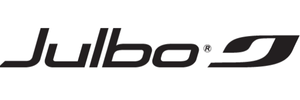
Matt Park and Fischer Hazen answer some questions about their guiding lifestyle, eye protection, and Julbo.
What company do you guide for, and which disciplines?
Matt: I work for a few different companies for various activities. For Mountain Trip it’s mostly mountaineering. I also work for Exum Mountain Guides in the Tetons for alpine and multipitch climbing, and for 12 finger outdoor adventure working around Salt Lake City and in the southern Utah desert Doing canyoneering and rock climbing
Fischer: I primarily work for Mountain Trip. In the summers in southwest Colorado I guide everything from multi pitch rock climbing and Via Ferratas to 14ers. In the winter, I guide lots of ice climbing, both single pitch as well as multipitch and alpine routes, and backcountry skiing. I also spend about three months a year guiding alpine climbing and mountaineering expeditions in the US and abroad - think Denali, Aconcagua, Kilimanjaro.
Where do you typically lead trips?
Matt: For Mountain Trip it’s climbing on Denali in the Alaska range.
Fischer: I spend most of my year guiding in Southwest Colorado. In addition to local work I have been guiding for four seasons in the Alaska Range, including 8 Denali trips (seven on the buttress and one rib trip) and one west face couloir trip on mount Huntington trip. I have guided in South America on Aconcagua as well as on Kilimanjaro in Africa.
Does your company require eyewear for every trip that you lead? If they don’t have it, can the client not participate?
Matt: On Denali yes. If someone shows up without adequate glacier glasses with a dark enough lens and good side coverage we will make them buy the right glasses before they can come on the expedition.
Fischer: For all our expeditions and peak ascents we do require eyewear. The requirements vary from glacier glasses with dark lenses and side protection in Alaska to standard sunglasses on peaks in Colorado. They are so important to us that we commonly carry an extra pair as guides in case someone loses or breaks a pair.
Have you ever gotten snow blindness? What was that like?
Matt: I have never had snow blindness but I have burned my eyes from welding which is about the same thing. It’s terrible, your eyes are irritated and they feel like they are full of sand but no matter what you do you can’t get relief.
Fischer: I have not but I have witnessed it and it looked terrible. Having to lay in a tent for a few days with a washcloth over your eyes was a pretty horrendous way to spend a trip. This person eventually recovered enough to get out of the mountains safely but it was a long process and they were in a lot of pain.
How long have you been wearing Julbos?
Matt: I have been wearing Julbos for about 6 years and will never go back. They really are the best eye protection for the mountains.
Fischer: about 5 years, when I first started glaciated climbing. I’ve never used anything else since I started and don't have an interest in trying anything else. Being able to see is so important, especially for my job, and the glasses will ensure that isn't compromised.

Below are the lens options in our mountaineering frames:
Alti Arc 4:
- This is a mineral glass lens - glass is where lenses all began. Due to its great optical quality, it’s no question as to why glass is still used today. Though clear, glass lenses are heavy and aren’t shatterproof, so you should avoid using them for activities that might cause breakage.
- VLT: 7%
- Available in the Cham

Spectron 4:
- Darkest category of of lenses available. Polycarbonate material makes it lightweight, shatterproof, and suitable for most activities.
- VLT: 5%
- Available in all mountaineering frames

REACTIV Performance 2-4:
- This lens transitions from category 2-4, making it appropriate for all terrain and mountain sports. The gold base helps it react quickly and when you need it most.
- VLT: 35% (light) to 7% (dark)
- Anti-fog treatment to keep your vision clear when breaking a sweat.
- Available in Shield, Explorer 2.0

REACTIV High Mountain:
- Transitions from category 2-4.
- Brown base and polarized, making it most appropriate for mountaineering and situations with lots of glare.
- Anti-fog treatment
- VLT: 20% (light) to 5% (dark)
- Available in Shield, Explorer 2.0





